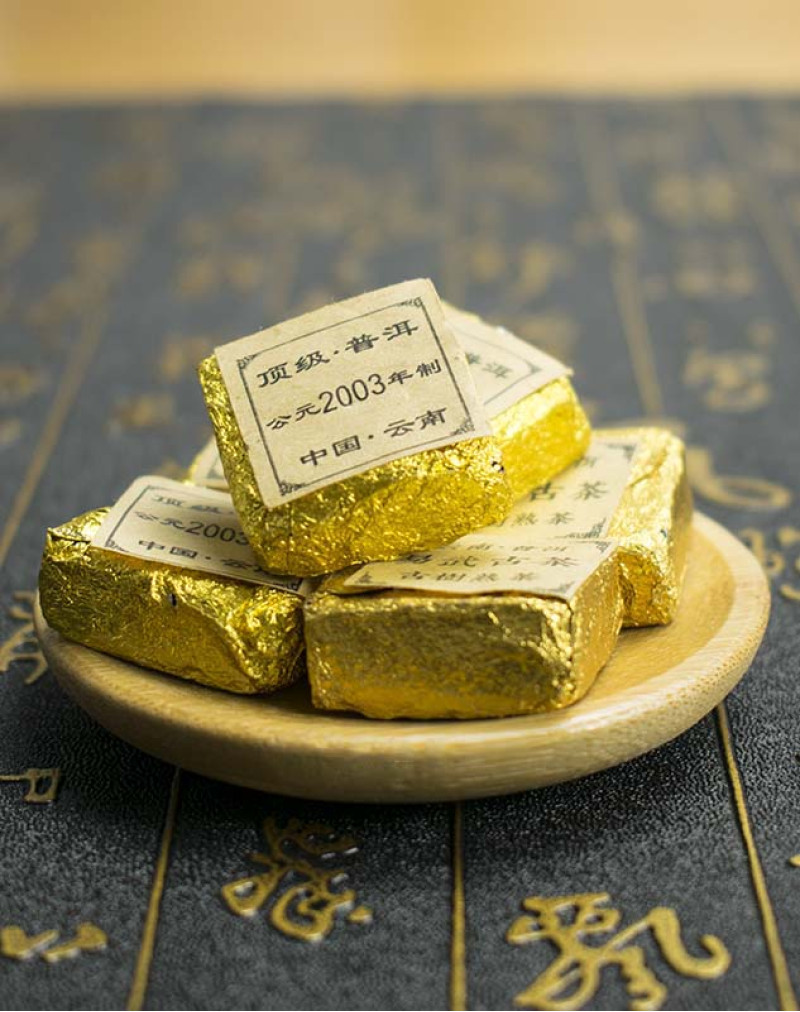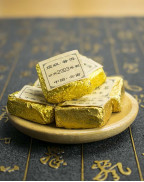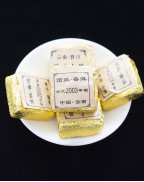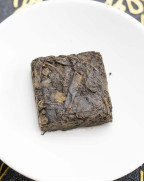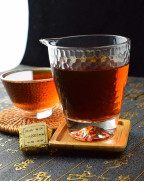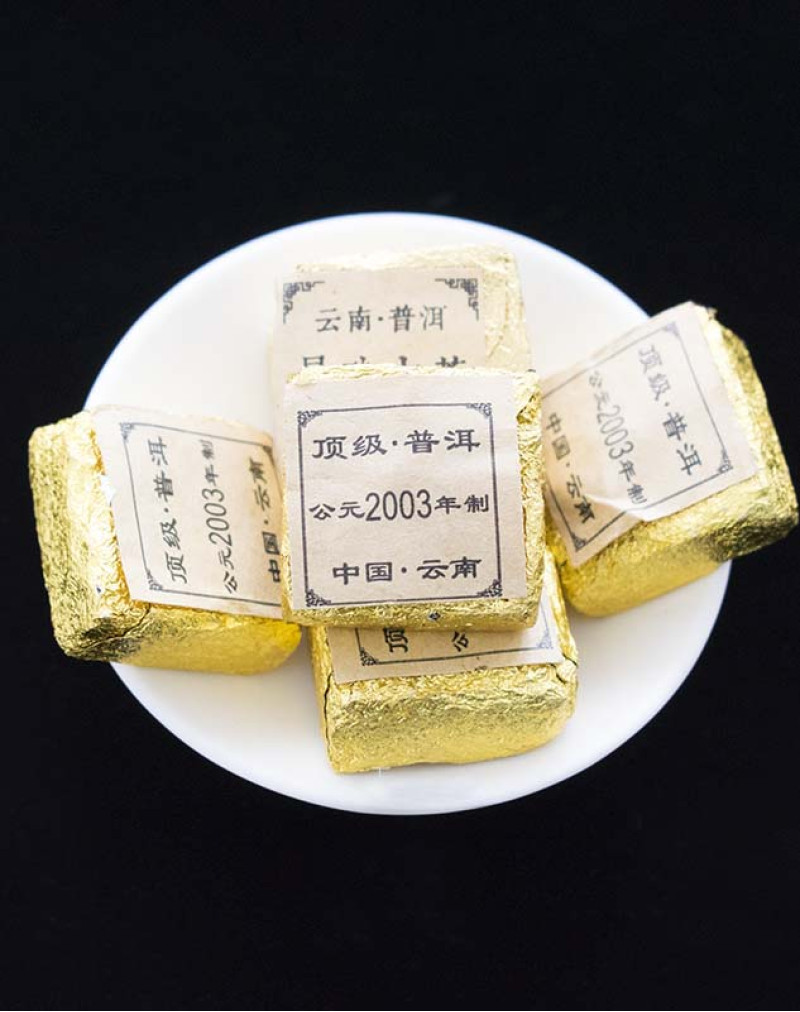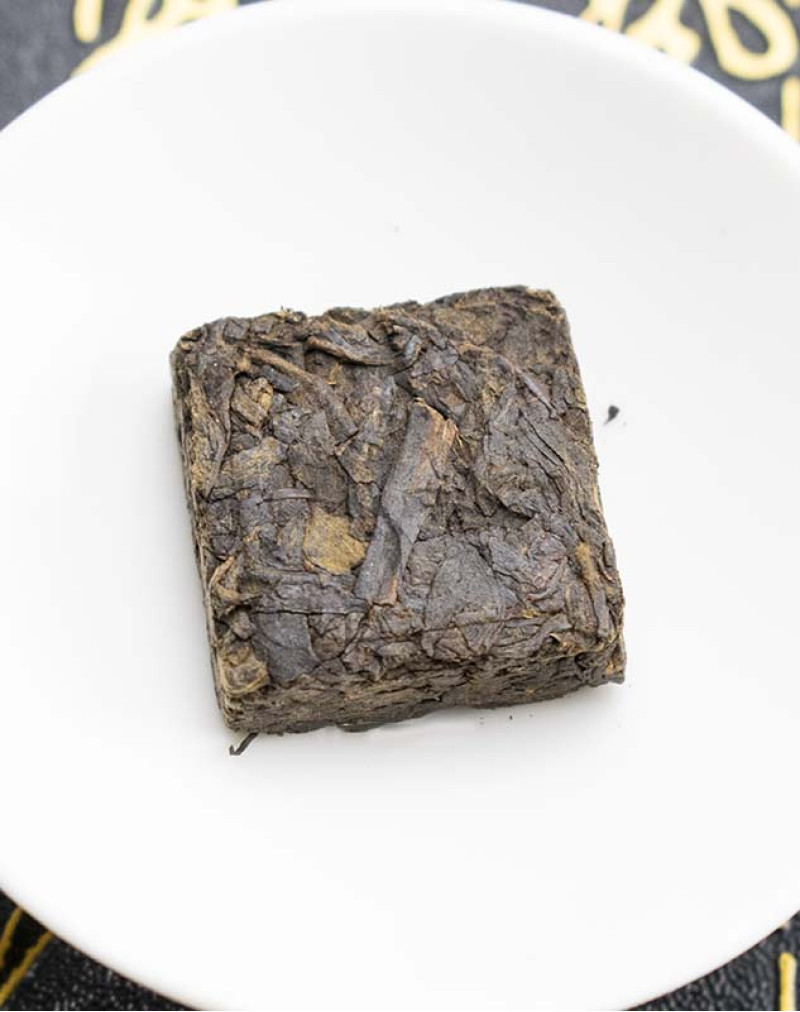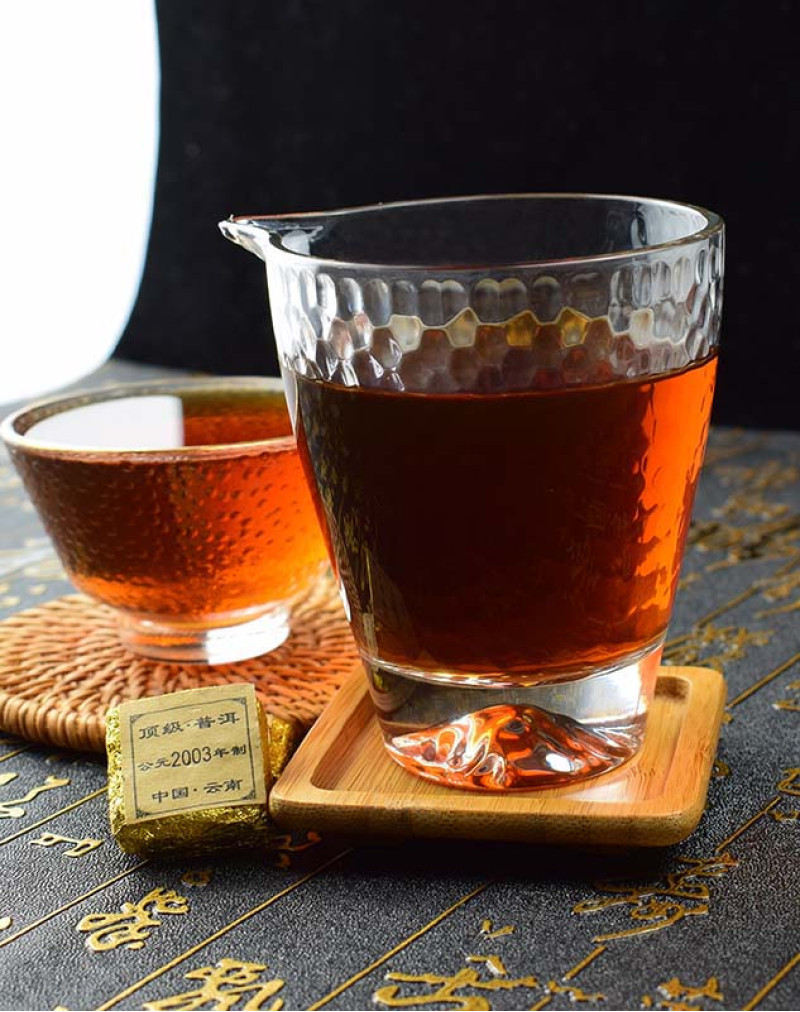Mini Brick Ripened Pu-erh
- Product Code: Simple
- Availability: Out Of Stock
Basic Info
Origin: Menghai County, Xishuangbanna, Yunnan Province
Taste & Aroma: Mellow,earthy, aged, heavy, sweet taste with flowery flavor
Item Form: Mini brick tea (7g)
Ingredients: 100% freshly picked leaves from Yunnan Large-leaf Arbor Tea Trees
Shelf Life: Long term
Caffeine: Low
Liquor: Dark red, bright liquid
Harvest Period:Spring, 2003
Season: Spring tea
Storage: Store in dry and temperate condition. Keep away from odors. The longer it stored, the better it tastes.
Flavor: unflavored
Mini Brick Ripened Pu-erh
A carefully selected Ripe Pu-erh Mini Tuocha composed entirely of high quality fresh leaves which were harvested in Spring 2003 and then pressed into these good quality mini brick tea. Aged in Kunming for almost 20 years, this tea has developed a nice aged taste but without losing it's innate flavor. Made with high-quality fresh leaves from Ancient arbor tea trees in Yunnan, this tea has amazing aged taste and pure smooth. Very mellow and tasty! They are individually wrapped to increase the shelf life. Each weighs about 7 grams.
Pu'erh tea is a kind of tea with unique regional characteristics, which is made from Yunnan big leaf sun dried green tea by specific processing technology.
It is a kind of tea with unique quality characteristics, which is made from Yunnan big leaf sun dried green tea by specific processing technology.
Due to the long distance and inconvenient transportation between the original producing area of Pu'erh tea and the cultural developed area of China Central Plains , Pu'erh tea was only recognized by Guanghan people in Ming and Qing Dynasties, which brings a lot of deficiencies and misunderstandings to people's understanding of the history and culture of Pu'erh tea. With the deepening of people's understanding of Pu'erh tea, the influence of Pu'erh tea is increasing year by year.
 Mini brick ripened pu-erh tea
Mini brick ripened pu-erh teaShow Full Description
Pu'erh tea is produced in the tea mountains along the Lancang River. It is produced not only from the original wild tea trees, but also from planted tea trees.
The soil in Pu'erh tea producing area is mainly red soil, yellow soil and latosol, which are formed by long-term weathering of granite, purple rock and sandstone. Its pH value is 4-6. It belongs to slightly acidic soil with high content of organic matter, good drainage and permeability, and deep soil layer, which is very suitable for the growth of tea trees.
The climate type of Pu'erh tea producing area is subtropical monsoon climate, with an average annual temperature of 17-22 ℃. The annual temperature difference is small, and the daily temperature difference is large. The annual rainfall is 1,200-1,800 mm. The rainy season is warm and humid. In addition, these tea moutains are located in mountainous and hilly areas, with an average altitude of 1,200-2,000 meters and shrouded by fog in the morning and evening, so the relative humidity is relatively high.The superior climatic conditions have contributed a lot to the growth of large-leaf tea plants.
Pu'erh is typically made through two steps. First, all leaves must be roughly processed into maocha to stop oxidation. From there it may be further processed by fermentation, or directly packaged. Summarising the steps
Maocha: Killing Green (殺青) -- Rolling (揉撚) -- Sun Drying (曬幹)
Green/raw (生普, sheng cha)
Dark/ripe (熟普, shu cha): -- Piling(渥堆))-- Drying(幹燥))
 Step of Wo Dui (piling / moisten heaping)
Step of Wo Dui (piling / moisten heaping)
Both sheng and ripe Pu'erh can be shaped into cakes or bricks and aged with time.
Pu'erh is compressed into a variety of shapes. The common shapes of Pu 'er tea are:
Loose tea: Loose Pu 'er tea still keeps its original scattered leaf shape without being pressed into a special shape, which is called loose tea.The finished loose tea is usually made from shrub tea.
Cake tea: also known as cake tea. Flat, disk-shaped, a bit like a pizza, is one of the most common varieties.
Tuo cha: shaped like a rice bowl, about 10 cm in diameter. Tuo tea is mainly made of tender leaves with fresh taste and many active substances.
Brick tea: it is about half the size of a brick and is also rectangular. Most of the brick tea was transported to different parts of the world via Tibet, Mongolia and other places, and it was made
in this shape to facilitate transportation. Brick tea materials are mostly mature leaves so its tea soup tastes mellow and it can be brewed many times.
Maoqing (Maocha): The freshly picked tea, after being killed-green (fixation), rolled and dried, becomes Pu'erh Maoqing (Maocha). After the Maoqing (Maocha) is made, it can be divided into "Ripened Pu'erh" and "Raw Pu'erh" due to the different follow-up processes.
Raw Pu'erh: Pressed maocha that has not undergone wòduī (渥堆) fermentation process. Because raw Pu 'er does not go through the stacking process, it retains both a little fresh fragrance and a little bit of astringency, with a sweet aftertaste.
high quality green Pu'erh is highly sought by collectors.
Ripened Pu'erh: maocha that has undergone an accelerated fermentation process lasting 45 to 60 days on average to make the taste of pu-erh tea thick,rich,mellow and have an exclusive earthy aroma.
Aged raw Pu'erh: pu-ert tea that has undergone a slow secondary oxidation and microbial fermentation for a long time (several years or more).
| Chinese Gongfu Method | |
| Tea | 1 cake |
| Water | Gaiwan 3oz (85ml) |
| Time | 7 steeps: rinse(10s),10s,10s,10s,15s,20s,30s,35s |
| Temperature | 100ºC/212ºF |
| Teapot Method | |
| Tea | 1 gâteau |
| Water | 8oz (230ml) |
| Time | 2-10 mins |
| Temperature | 100ºC/212ºF |


